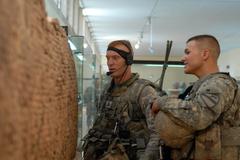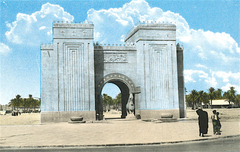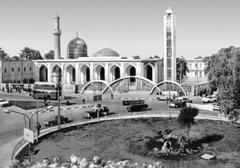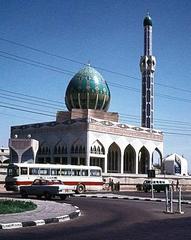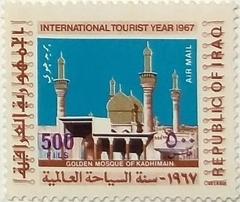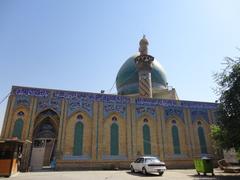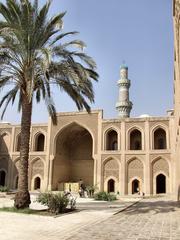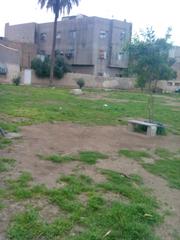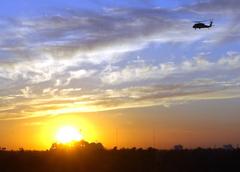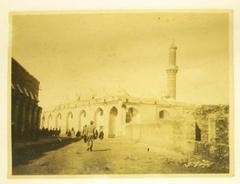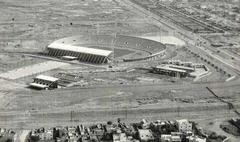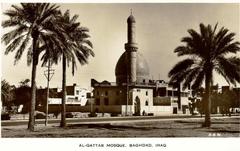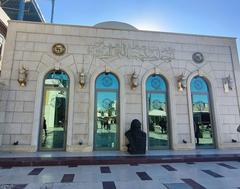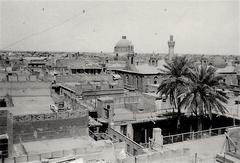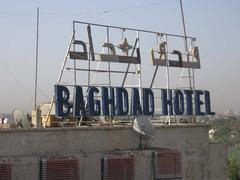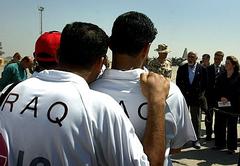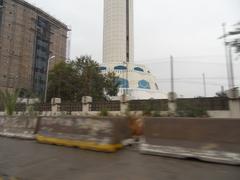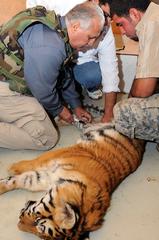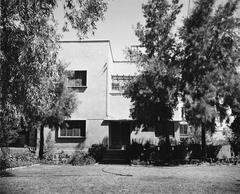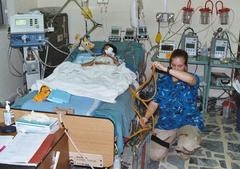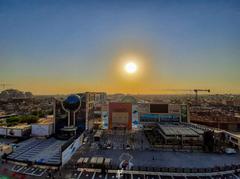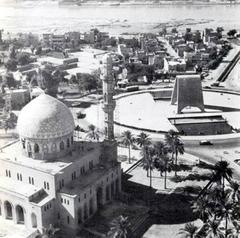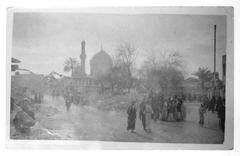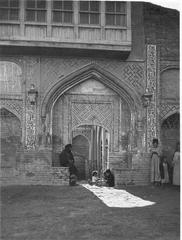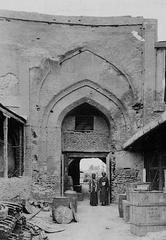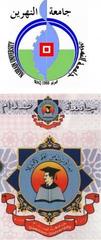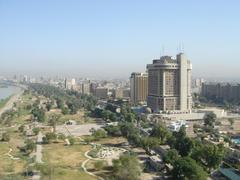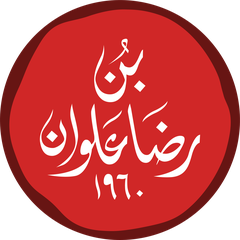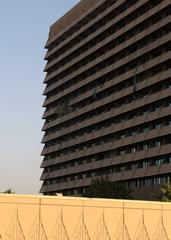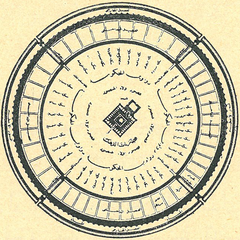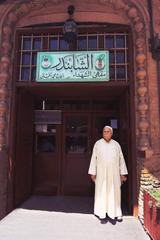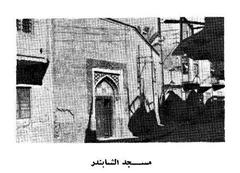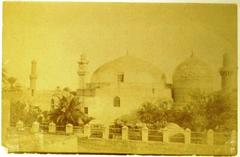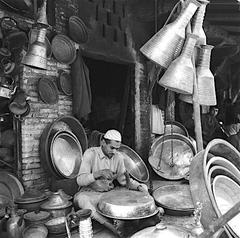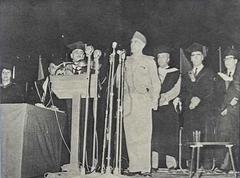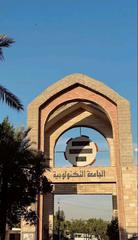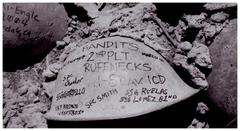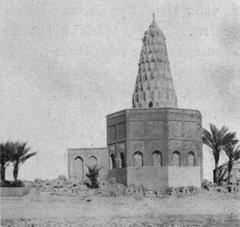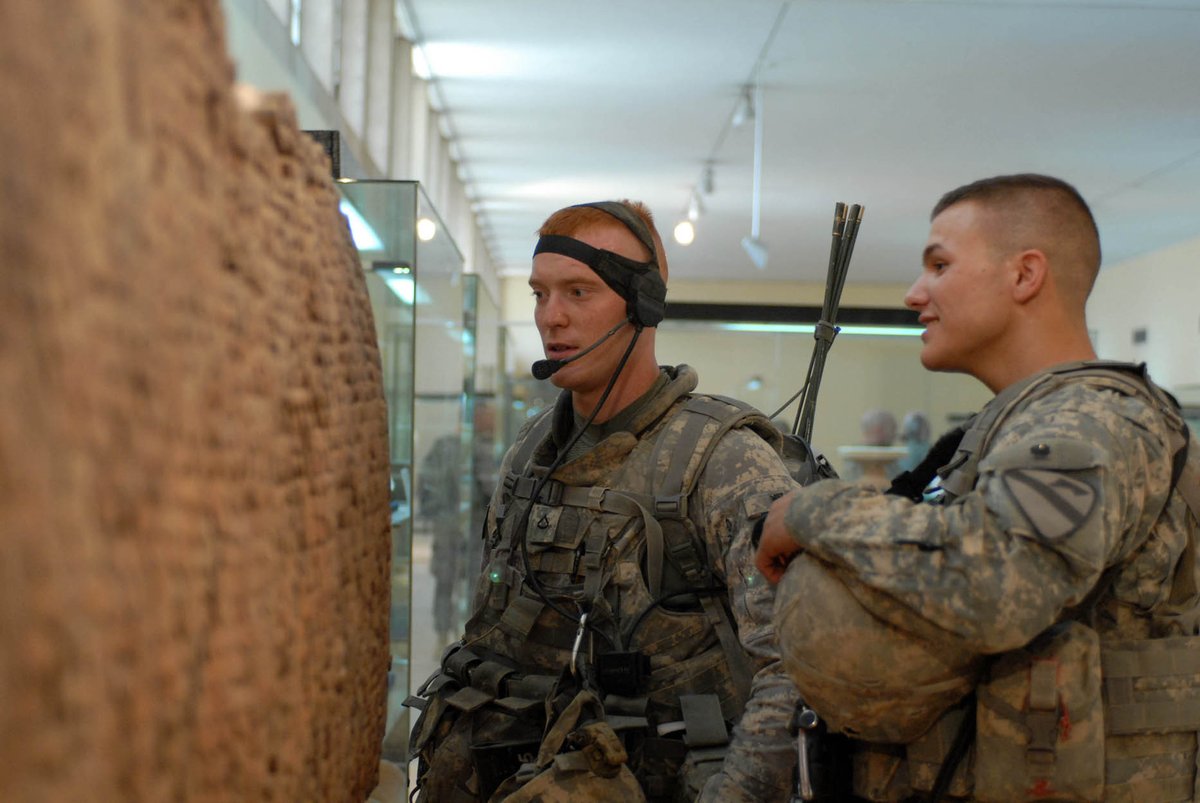
National Museum of Iraq Baghdad: Visiting Hours, Tickets, and Historical Sites Guide
Date: 14/06/2025
Introduction
Nestled in Baghdad’s Al-Salihiyyah District, the National Museum of Iraq is a globally renowned repository of Mesopotamian, Babylonian, Assyrian, and Islamic artifacts. Established in 1923 through the pioneering work of Gertrude Bell, the museum has grown from a small collection in an Ottoman barracks to a sprawling complex dedicated to preserving and showcasing over 7,000 years of human civilization. For visitors, the museum offers profound insight into ancient cultures that fundamentally shaped world history, with highlights including the Warka Vase, the Lady of Warka, and the Black Obelisk of Shalmaneser III.
This guide provides comprehensive and up-to-date information on the museum’s history, visiting hours, ticketing, accessibility, must-see galleries, and nearby attractions. Drawing from authoritative sources, it ensures travelers, students, and history enthusiasts can plan a meaningful and enriching visit (National Museum of Iraq Visiting Hours, Tickets, and History; World History Encyclopedia; UNESCO).
Table of Contents
- Historical Background
- Visitor Information
- Museum Structure and Collections
- Planning Your Visit
- Nearby Attractions
- Frequently Asked Questions (FAQs)
- Summary and Final Tips
- References
Historical Background
Early Foundations and Vision
The National Museum of Iraq was founded in 1923, an outcome of Iraq’s emerging national identity and the global recognition of Mesopotamia’s archaeological significance. British archaeologist Gertrude Bell played a key role in shaping the country’s heritage policy and establishing the institution during King Faisal I’s rule. The museum began in the Qishla, a former Ottoman barracks, but quickly outgrew this space due to the rapid expansion of its collections.
Growth and Relocation
Following years of excavation and international collaborations, the museum moved in 1926 to Al-Ma’moun Street to accommodate its growing collection. In 1938, plans for a purpose-built museum were launched, and the current Al-Salihiyyah site’s foundation was laid in 1957, opening officially in 1966. The design integrates modern architecture with Mesopotamian motifs, symbolizing the continuity between Iraq’s ancient and modern identities.
Expansion and International Recognition
Over the 20th century, the museum amassed hundreds of thousands of artifacts, including world-famous pieces like the Warka Vase and the Lady of Warka. Its collections provide a comprehensive look at the development of writing, law, religion, and urbanism, attracting scholars and tourists from across the globe.
Conflict, Looting, and Recovery
The museum suffered devastating losses during the 2003 Iraq War, with the looting of nearly 15,000 artifacts—a blow to Iraq’s cultural heritage and global patrimony (MERIP). Intensive efforts by museum staff and international partners have led to the recovery and repatriation of thousands of items, though many remain missing (Yahoo News).
Modernization and Contemporary Role
After years of restoration and security upgrades, the museum reopened to the public in 2015, now featuring 23 galleries and incorporating digital resources such as virtual tours. Today, it serves as an educational hub and a powerful symbol of Iraqi resilience (MEI; UNESCO).
Visitor Information
Location and Getting There
The National Museum of Iraq is located in the Al-Salihiyyah District, central Baghdad, near the west bank of the Tigris River. Accessible by taxi or private car, “muthaf” is the Arabic word for museum. Due to heavy traffic and security considerations, allow extra time for travel. Public transport is not recommended for foreign visitors (Adventures of Lil Nicki).
Visiting Hours
- Monday to Thursday: 9:00 AM–1:00 PM
- Friday: 9:00 AM–4:00 PM (free entry for Iraqi citizens)
- Saturday and Sunday: Confirm locally, as timings may vary
- Closed: Public holidays
- Hours may change due to local events or security; confirm before your visit (IraqiNews.com; Trip.com).
Ticket Prices
- Iraqi citizens: 3,000 dinars (approx. $2.50); free on Fridays
- Foreign tourists: 25,000 dinars (approx. $20)
- Students: Discounts available with valid ID
- Tickets are sold at the entrance; cash (Iraqi dinar) required (Destination Iraq; TripHobo).
Accessibility and Amenities
- Wheelchair Accessibility: Most galleries accessible; some areas may have steps or uneven flooring. Inquire in advance for special needs.
- Restrooms: Available near the entrance and select galleries
- Café & Gift Shop: Limited options; nearby eateries in Al-Salihiyyah district
- Lockers: Available for storing personal items
Photography Policy
- Non-flash photography is generally allowed; confirm with staff upon arrival.
Security and Safety
- The museum is in a secure area, with strict bag checks and metal detectors.
- Carry valid ID (passport) for entry.
- Stay updated on travel advisories and follow all instructions from museum staff (Beyond the Bucket List).
Guided Tours and Events
- Guided tours are highly recommended and can be arranged on-site or through reputable operators.
- Special exhibitions and cultural events are held periodically; check the official website or social media for updates.
Museum Structure and Collections
Building Layout
The museum complex, built between 1957–1963 with a major expansion in 1986, covers 45,000 square meters and includes 23 main exhibition halls arranged around a central courtyard (CDLI; Wikipedia).
Chronological Gallery Flow
Galleries guide visitors through the history of Iraq from the Paleolithic era to the Islamic period:
- Prehistoric
- Sumerian
- Akkadian
- Babylonian
- Assyrian
- Chaldean
- Sasanian
- Islamic
Major Exhibition Halls
- Prehistoric Hall: Tools, pottery, and skeletal remains from Shanidar Cave and Jarmo
- Sumerian Hall: 5,000-year-old lyre, votive bowls, and early writing tablets
- Babylonian & Assyrian Halls: Monumental reliefs, lamassu statues, cylinder seals, and legal tablets
- Hatra & Parthian Halls: Statuary and artifacts blending Greco-Roman and Eastern influences
- Islamic Hall: Abbasid ceramics, manuscripts, and metalwork (UNESCO)
Signature Artifacts
- Cuneiform Tablets: Documenting administration, literature, and law (Wikipedia)
- Nimrud Gold Collection: 9th-century BCE jewelry and figurines
- Uruk Treasures: Early writing and monumental art from 3500–3000 BCE
- Legal Codes: Fragments of Hammurabi’s code (Britannica)
- Babylonian and Assyrian Artifacts: Statues, reliefs, and daily life objects
Planning Your Visit
Best Times to Visit
- Season: Spring (March–May) and autumn (September–November) offer mild weather (Tourist Places Guide).
- Weekdays: Mornings are less crowded; Fridays are busiest due to free entry for locals.
Dress Code and Etiquette
- Dress modestly—cover shoulders, arms, and legs.
- Women do not need headscarves inside the museum but should carry one for religious sites.
- Maintain respectful behavior and minimize noise.
Language & Communication
- Exhibits have Arabic and English labels; some staff speak basic English.
- Hiring a local guide enhances understanding (HelloTravel).
Health and Hygiene
- Bring bottled water and hand sanitizer; avoid tap water.
- Carry necessary medications, as there are no on-site medical facilities.
Nearby Attractions
- Abbasid Palace: Medieval architecture on the Tigris
- Al-Mutanabbi Street: Baghdad’s historic book market
- Al-Shaheed Monument: Memorial to Iraqi soldiers
- Baghdad Zoo: Family-friendly destination
- Al-Kadhimiya Mosque: Sacred site open to visitors outside prayer times (Tourist Places Guide)
Frequently Asked Questions (FAQs)
Q: What are the museum’s visiting hours?
A: Monday to Thursday: 9:00 AM–1:00 PM; Friday: 9:00 AM–4:00 PM; closed on public holidays. Confirm locally before visiting.
Q: How much are tickets?
A: 3,000 IQD for locals (free Fridays), 25,000 IQD for foreigners; discounts for students.
Q: Is the museum wheelchair accessible?
A: Most galleries are accessible, but some areas have steps. Contact the museum for details.
Q: Are guided tours available?
A: Yes, on-site or through tour operators; highly recommended for deeper context.
Q: Is photography allowed?
A: Non-flash photography is generally permitted—ask staff for specific gallery rules.
Q: What’s the best way to get there?
A: Taxi or private car is recommended; public transport is not ideal for tourists.
Summary and Final Tips
The National Museum of Iraq is more than a trove of ancient artifacts—it is an emblem of Iraq’s cultural resilience and a testament to global heritage. Despite war and looting, its curated galleries narrate the origins of writing, law, and civilization. With practical amenities, accessibility features, and ongoing modernization, visitors can enjoy a safe, informative, and memorable experience. Combine your visit with other Baghdad historical sites for a comprehensive cultural itinerary. For the latest updates on hours, events, and travel guidance, use the Audiala app and follow the museum on social media (MERIP; MEI; Yahoo News).
References
- National Museum of Iraq Visiting Hours, Tickets, and History
- The Iraq Museum: Three Wars, Three Steps From Hell – World History Encyclopedia
- Protecting Humanity’s Shared Heritage in Iraq – UNESCO
- Iraq’s Cultural Heritage Between 2003 and 2023 – MERIP
- Saving Iraq’s Cultural Heritage – Middle East Institute
- Iraq Cultural Heritage: A Double-Edged Sword – Yahoo News
- IraqiNews.com Iraq Museum Overview
- UNESCO Iraq Museum
- CDLI – Museum Collection
- Wikipedia: Iraq Museum
- Destination Iraq – Visiting the Iraqi Museum
- Unusual Traveler – Visiting Baghdad
- Iraq Action – Architecture
- TripHobo – National Museum
- Trip.com – National Museum
- HelloTravel – National Museum of Iraq
- Adventures of Lil Nicki – Iraq Travel Guide
- Beyond the Bucket List – Iraq Travel Tips
- Tourist Places Guide – Baghdad
- Britannica – Iraq Museum
